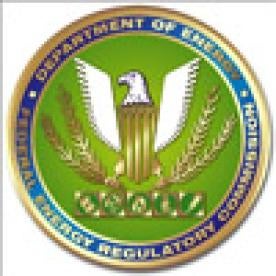Those looking to the Federal Energy Regulatory Commission (FERC) for certainty regarding compensation for owners of generation and non-generation resources for the capability to provide reactive power will have to wait a while longer. On July 16, 2020, in response to a petition filed by a coalition of merchant generators seeking guidance regarding reactive service compensation under the PJM Interconnection LLC (PJM) Open Access Transmission Tariff (Tariff), FERC deferred its decision on most of the issues to a future order in the ongoing Panda Stonewall LLC proceeding, and established paper hearing procedures in Docket No. EL19-70 to consider what is a reasonable proxy to determine the capital structure and cost of capital for a merchant generator in reactive rate proceedings.
The Case for Reactive Rate Certainty
Reactive power is a critical ancillary service provided by generation and non-generation resources on a transmission system to facilitate the long-distance transmission of real power, and to support system voltages and help ensure reliability of the transmission grid. In PJM, generators wishing to be compensated for the capability of providing reactive power must file cost-based reactive power tariffs with FERC.
Following a period of relative quiet and certainty, FERC in the last 7-8 years has set nearly all reactive rate filings for hearing and settlement procedures with thin guidance or directives for the participants on the issues for resolution. As a result, reactive rate filers have been faced with effectively a Hobson’s choice between settling at drastically reduced rates, in proceedings where the only other participants typically are FERC Trial Staff and PJM’s independent market monitor, or potentially protracted litigation. Understandably, the vast majority of filers have opted to resolve their cases with black box settlements, which are non-precedential. The uneven results in these cases have left the industry with uncertainty regarding rate recovery for the provision of reactive service.
To address these uncertainties, a group of merchant generators filed a Petition for Declaratory Order in May 2019 in Docket No. EL19-70 seeking FERC guidance on six issues to reduce litigation costs for all parties, promote fair settlements, and facilitate recovery by merchant generators of their full reactive power costs. The group asked FERC to clarify:
-
that a merchant generator in PJM can use, as a proxy for its capital structure and return on equity, the capital cost and capital structure determined in PJM’s “Cost of New Entry” study (CONE Study), noting that the current proxy to determine their capital structure and cost of capital, based on the interconnected transmission utility’s cost of capital and capital structure, is overly conservative given the increased risks faced by merchant generators;
-
that a generator may include the fixed costs of firm fuel delivery in the calculation of its reactive power rate, like any other fixed operating & maintenance cost;
-
the type of evidence on which a merchant generator can rely to show the construction costs incurred by its Engineering, Procurement, and Construction Contractor;
-
the types of indirect costs that may be included in a generator’s reactive power tariff;
-
that a generator may seek recovery for its reactive power costs based on its full reactive power capability, rather than the minimum capability required under the PJM tariff; and
-
the methodology for allocating to reactive power the costs of accessory electric equipment.
Tomorrow, And Tomorrow, And Tomorrow
In its order, FERC determined that the current record is insufficient for FERC to provide further guidance on whether PJM’s CONE Study is a reasonable proxy to determine a merchant generator’s capital structure and cost of capital in its reactive power rate schedule. To develop a fuller record on the issue, FERC set the case for a paper hearing and directed parties to the proceeding to file initial comments with FERC within 45 days.
FERC punted on the other issues raised in Petitioners’ request, noting that they will be addressed in a future FERC order in the ongoing Panda Stonewall LLC case.
The Panda Stonewall case is one of only a few reactive power cases that have proceeded to a hearing before a FERC Administrative Law Judge (ALJ). The multi-day hearing was held on October 30 through November 9, 2018. The ALJ assigned to the case, Judge Krolikowski, issued an initial decision on April 26, 2019. Participants in the case raised a number of exceptions to the initial decision. In July 2019, Panda Stonewall filed a unilateral Offer of Settlement to resolve the issues in the case. The other participants in the case, including FERC Trial Staff, oppose the settlement. The case is pending before the full Commission in Docket No. ER17-1821.



 i
i

